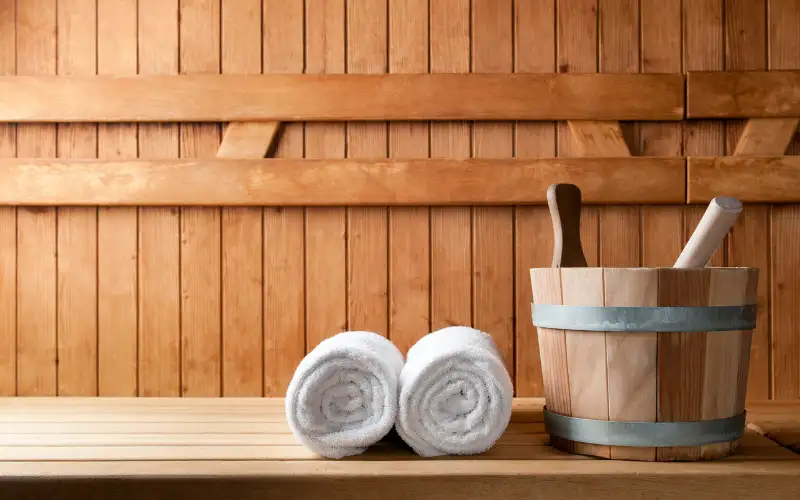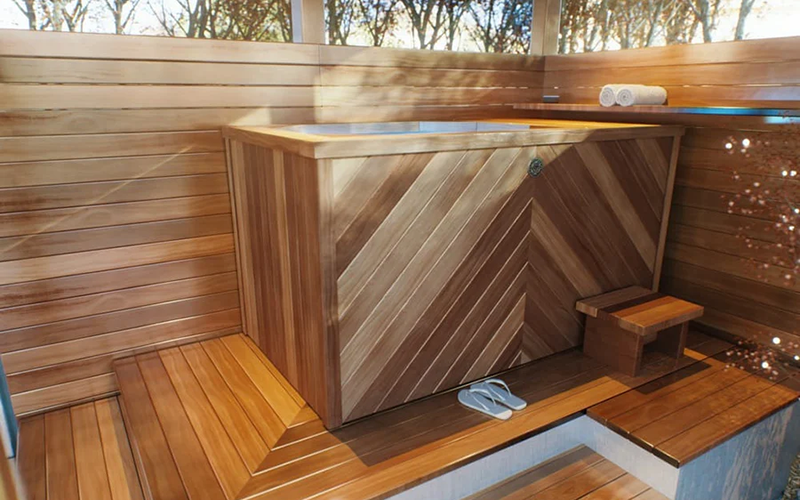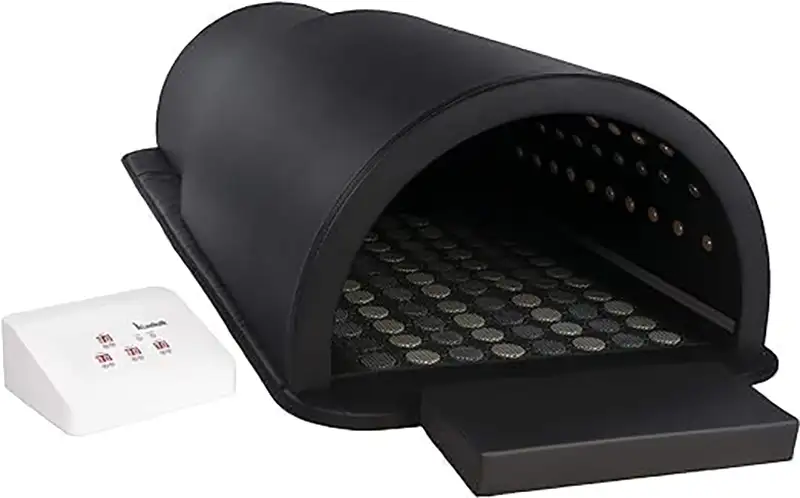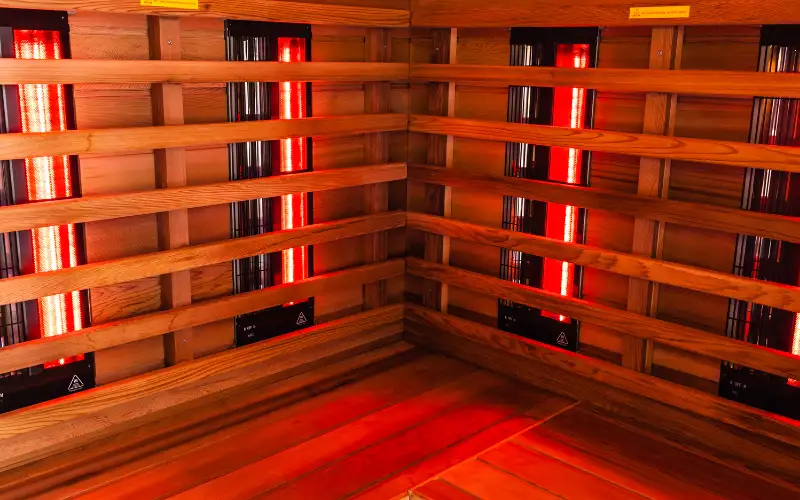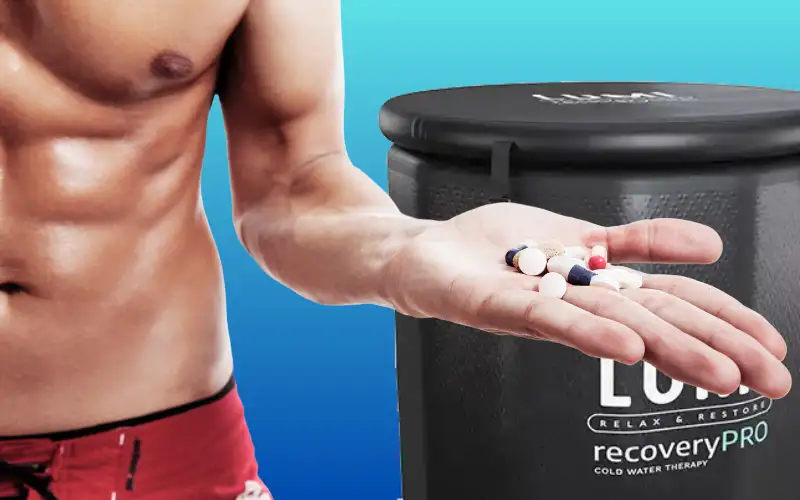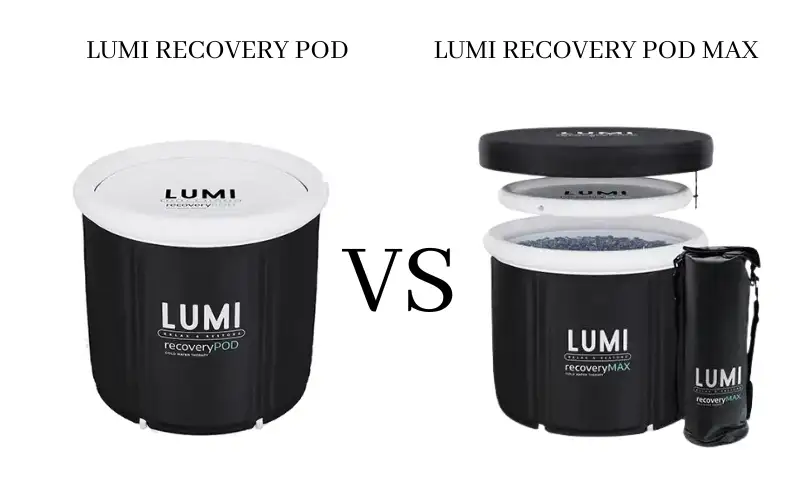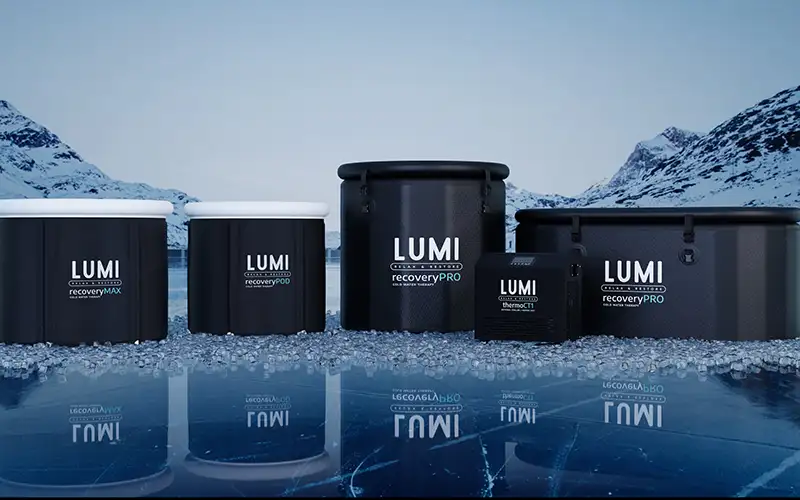Saunas have been cherished across cultures for centuries, and their popularity has transcended time. Beyond the immediate relaxation they offer, scientific research has uncovered a plethora of health benefits associated with regular sauna use. In this comprehensive exploration, we delve into the intricate details of the scientific findings that support the positive impact of saunas on cardiovascular health, stress reduction, metabolism, and more.
A Historical Glimpse: Saunas Through Time
Before the era of scientific studies and empirical evidence, saunas were already an integral part of cultural practices across the globe. The roots of sauna usage can be traced back to ancient traditions that viewed heat as a transformative force for both the body and the spirit.
Finnish Saunas: The Pioneers of Heat Therapy
The Finnish sauna, or “savusauna,” stands as a testament to the enduring cultural significance of heat in Northern Europe. For centuries, Finns have embraced the sauna not merely as a place to cleanse the body, but as a sacred space for communal gatherings, spiritual rituals, and even childbirth. The Finnish sauna was traditionally a separate building, often located near lakes or rivers, where individuals would experience the purifying effects of intense heat followed by invigorating cold plunges. These traditional Finnish saunas, with their wood-fired stoves and distinctive aromatic scents, set the stage for the modern sauna experience. The term “sauna” itself has Finnish origins, reflecting the cultural importance of this practice.
Native American Sweat Lodges: Rituals of Purification
In North America, Native American tribes had their own version of the sauna in the form of sweat lodges. These structures, made from natural materials like branches and animal hides, were used for purification ceremonies. The intense heat generated by heated stones and water would induce sweating, considered a physical and spiritual cleansing process. The sweat lodge ceremonies were not only about purifying the body but also about connecting with nature and the spirit world. The heat inside the sweat lodge was seen as a medium for spiritual rebirth and renewal. Participants in these ceremonies would share stories, prayers, and communal experiences, fostering a sense of unity and well-being.
Roman Thermae: Early Encounters with Heat Bathing
In the ancient Roman Empire, public bathhouses or “thermae” served as social hubs where people engaged in various bathing rituals, including exposure to heat. While not identical to the saunas we know today, the Roman appreciation for heat bathing contributed to the evolving understanding of the benefits associated with elevated temperatures. Roman bathhouses featured rooms with varying temperatures, and individuals would progress from hot rooms to cold pools, akin to the principles of contrast bathing found in modern saunas. The Romans recognised the invigorating effects of heat on the body and its potential for promoting overall well-being.
Japanese Sento: Bathing for Body and Soul
In Japan, the cultural practice of communal bathing, known as “sento,” has historical roots dating back to the Nara period (710–794 AD). While not a traditional sauna, the emphasis on communal bathing for health and social interaction shares similarities with sauna traditions in other parts of the world. The Japanese recognised the therapeutic benefits of heat, with bathing seen as a way to cleanse the body, relax the mind, and foster community bonds. Sento establishments, like Finnish saunas, provided spaces for both physical and spiritual rejuvenation through the transformative power of heat.
Ancient Chinese Hot Baths: Balancing Yin and Yang
Ancient China had its own version of heat therapy through hot baths. The Chinese believed in the balance of Yin and Yang energies, and hot baths were considered a way to restore harmony to the body’s vital energies. These baths were not only about physical cleanliness but also about achieving a sense of equilibrium and well-being. The use of heat in ancient Chinese bathing practices laid the groundwork for the broader understanding of heat’s positive effects on the body, influencing later traditions that incorporated elevated temperatures for health benefits.
Continuing Traditions: Saunas in the Modern Era
As we reflect on the historical tapestry of saunas, it becomes evident that the appreciation for heat as a transformative and healing force has persisted across cultures and centuries. These ancient practices have left an indelible mark on the modern sauna experience, shaping not only the physical structures but also the cultural and spiritual significance attached to sauna usage.
Scientific studies shed light on the physiological and psychological benefits of sauna use, demonstrating how these age-old traditions have laid the foundation for the contemporary understanding of saunas as spaces that promote holistic well-being. The rich tapestry of sauna history serves as a reminder that, beyond the scientific discourse, there exists a profound cultural legacy that continues to resonate in the heat-filled chambers of saunas worldwide.
Sauna Benefits: Harnessing Heat For Holistic Health
Saunas offer a host of benefits. From promoting cardiovascular health to alleviating stress, supporting metabolism, and even contributing to detoxification, the benefits of saunas are as diverse as the cultures that have cherished them.
Cardiovascular Health
One of the most compelling areas of scientific research surrounding saunas is their effect on cardiovascular health. Multiple studies have demonstrated that regular sauna sessions contribute to improved cardiovascular function. The heat experienced in a sauna induces vasodilation, the widening of blood vessels, leading to increased blood flow and enhanced circulation.
Research has indicated that sauna use may have a positive impact on blood pressure regulation. A study published in the American Journal of Hypertension found that sauna bathing was associated with a reduction in both systolic and diastolic blood pressure. This suggests that incorporating saunas into a wellness routine may be beneficial for individuals with hypertension.
Furthermore, the heat stress experienced during sauna sessions can trigger the release of certain chemicals, such as nitric oxide, that play a crucial role in maintaining blood vessel health. Nitric oxide helps relax blood vessels, promoting better blood flow and potentially reducing the risk of cardiovascular events.
Stress Reduction
Saunas are renowned for their ability to promote relaxation and alleviate stress. The physiological response to the heat, including increased endorphin release, contributes to the overall sense of well-being. Scientifically, this can be attributed to the activation of the body’s “fight or flight” response, followed by a “rest and digest” response as the body adapts to the heat stress.
Research conducted at the University of Eastern Finland demonstrated that sauna bathing is associated with a decreased risk of developing psychological stress. The study found that individuals who engaged in regular sauna sessions experienced a lower risk of stress-related disorders, highlighting the potential mental health benefits of sauna use.
Additionally, the impact of saunas on stress reduction extends to the hormonal level. Sauna bathing has been shown to reduce levels of cortisol, the primary stress hormone. Lower cortisol levels are associated with improved mood, better sleep quality, and an overall sense of relaxation.
Metabolism Boost
Beyond its effects on the cardiovascular system and stress levels, sauna use may also influence metabolism. Sweating is a natural response to the heat in a sauna, and this process expends energy. While sauna sessions alone may not replace traditional exercise, they can contribute to an overall increase in calorie expenditure.
A study published in the Journal of Applied Physiology investigated the acute cardiovascular and hormonal responses to sauna sessions. The researchers found that sauna bathing led to an increase in heart rate, similar to what is observed during moderate-intensity exercise. This heightened cardiovascular activity, coupled with the energy expended through sweating, suggests that saunas may have a role in supporting metabolic health.
Furthermore, the heat exposure in saunas may enhance insulin sensitivity, a crucial factor in metabolic health. Improved insulin sensitivity can contribute to better blood sugar control, potentially benefiting individuals at risk of metabolic conditions such as type 2 diabetes.
Detoxification
The act of sweating in a sauna is not merely a cooling mechanism; it serves as a natural form of detoxification. Sweating helps eliminate certain toxins from the body, promoting a sense of cleansing from the inside out.
Research has shown that sweating in saunas can lead to the excretion of heavy metals, such as lead and mercury, through the skin. While the extent of detoxification through sweating may be limited compared to other bodily processes, it adds another layer to the holistic benefits of sauna use.
Moreover, the heat-induced sweating in saunas can contribute to the removal of various pollutants and chemicals that the body may accumulate through environmental exposure. This process aligns with the body’s natural mechanisms for maintaining homeostasis and eliminating potentially harmful substances.
Immune System Support
Saunas may also play a role in supporting the immune system. The increase in body temperature during sauna sessions can stimulate the production of white blood cells and enhance the activity of immune cells, contributing to a robust immune response.
A study published in the International Journal of Biometeorology investigated the impact of sauna bathing on the immune system. The researchers observed an increase in the number of circulating white blood cells, particularly lymphocytes, after sauna sessions. These findings suggest that sauna use may have a positive influence on immune function.
It’s important to note that while saunas can be a supportive element for immune health, maintaining a balanced and healthy lifestyle, including proper nutrition and regular exercise, remains fundamental for overall well-being.
Skin Health
Sauna benefits extend beyond internal health to encompass external well-being, particularly skin health. Sweating in a sauna opens up pores, expelling dirt, oil, and dead skin cells. This natural exfoliation process can contribute to a clearer complexion and a healthier-looking skin tone.
Additionally, the increased blood flow stimulated by sauna heat brings vital nutrients to the skin’s surface, promoting collagen production and overall skin rejuvenation. While saunas are not a substitute for a comprehensive skincare routine, they can complement such efforts by promoting skin health from within.
The Power of Contrast: Saunas and Ice Baths in Harmony
While there are a great number of sauna benefits, an intriguing aspect of holistic wellness involves the juxtaposition of heat with its icy counterpart – the ice bath. This practice, known as contrast bathing or hydrotherapy, has gained popularity for its potential to enhance the benefits derived from both extremes of temperature. The marriage of sauna-induced heat stress and the invigorating chill of an ice bath creates a symphony of physiological responses that can elevate the overall well-being of those willing to embrace the contrast.
Promoting Circulation and Recovery
The alternating exposure to heat and cold triggers a phenomenon known as vasodilation and vasoconstriction. In the sauna, blood vessels dilate, promoting increased blood flow and circulation. This is followed by the contrasting cold of an ice bath, which causes blood vessels to constrict. This dynamic vascular response stimulates a pumping action, enhancing circulation and potentially aiding in the removal of metabolic waste products from muscles.
Reducing Inflammation and Muscle Soreness
The combination of heat and cold is a powerful tool in managing inflammation and alleviating muscle soreness. The heat from the sauna helps to relax muscles and soothe tension, while the cold from the ice bath constricts blood vessels, reducing swelling and inflammation. Athletes and fitness enthusiasts often turn to this contrast therapy to expedite recovery after intense workouts.
Boosting Endorphin Release
The alternation between the sauna’s heat and the shock of an ice bath prompts the body to release endorphins, the body’s natural feel-good chemicals. This not only contributes to an enhanced sense of well-being but also underscores the psychological benefits of contrast bathing. The uplifting effect on mood can be particularly pronounced, providing a natural and exhilarating high.
Enhancing Immune Function
The stress on the body induced by the temperature fluctuations in contrast bathing may stimulate the immune system. While further research is needed to fully understand the extent of this impact, some studies suggest that the practice may contribute to the activation of immune cells, potentially bolstering the body’s defenses against illness.
Improving Skin Health
The combination of hot and cold exposure can have positive effects on the skin. The heat from the sauna opens up pores, promoting cleansing, while the cold from the ice bath tightens the skin, reducing the appearance of pores and enhancing overall skin tone. This dual-action contributes to a refreshed and revitalized complexion.
Caution and Considerations
While the benefits of combining saunas with ice baths are intriguing, it’s crucial to approach this practice with caution. Individuals with certain health conditions, such as cardiovascular issues or Raynaud’s disease, should consult with a healthcare professional before incorporating contrast bathing into their routine. Moreover, gradual exposure and personalised adjustments to temperature extremes are essential to ensure a safe and enjoyable experience.
In embracing the dynamic dance between heat and cold, we unlock a gateway to a heightened state of well-being. Whether seeking recovery from physical exertion, invigorating the senses, or promoting resilience, the combination of saunas and ice baths stands as an incredible tool for overall health.
